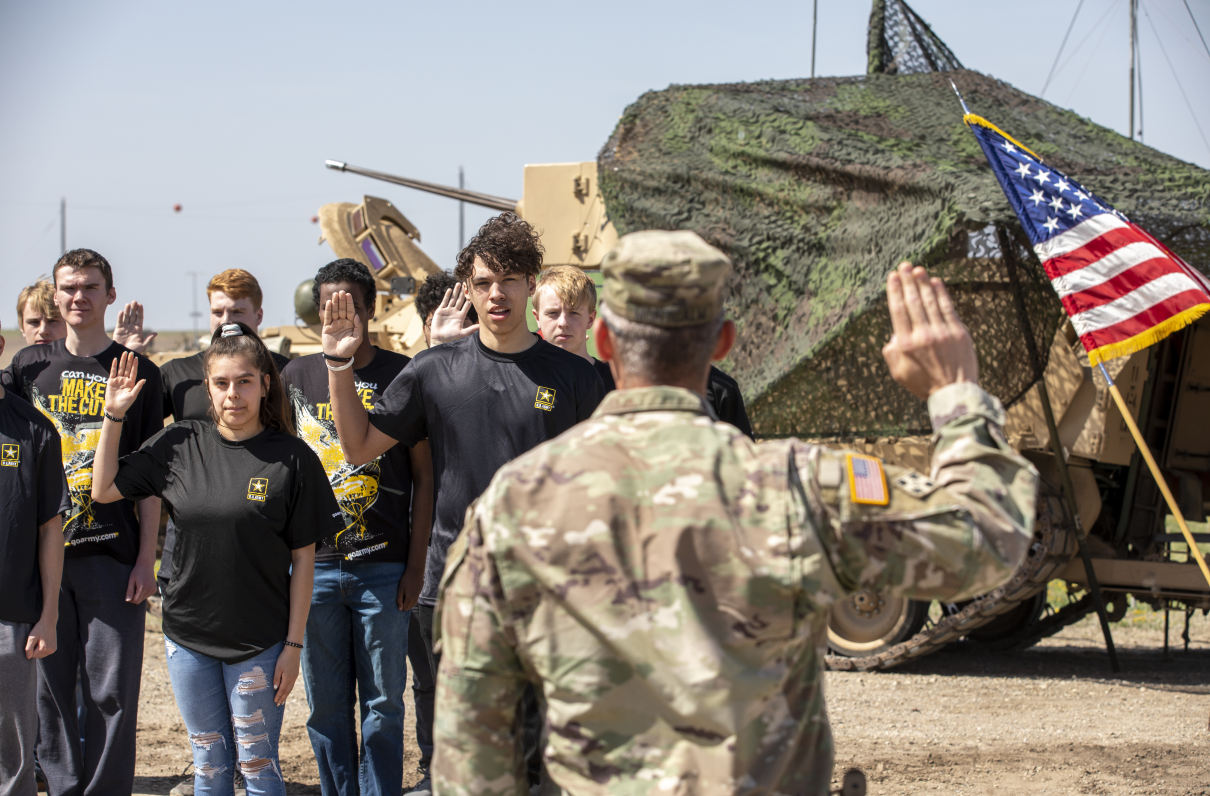This article by Todd South originally appeared on Military Times, the nation's largest independent newsroom dedicated to covering the military and veteran community.
After several dismal recruiting years, Army officials announced the service has exceeded its recruiting goals for this fiscal year.
Army Secretary Christine Wormuth made the announcement Wednesday that the Army had surpassed its 55,000 recruit goal for Fiscal Year 2024. Final numbers will not be available until the end of the fiscal year on Sept. 30.
“We not only met our goal, we exceeded it,” she said.
The results represent a reversal of recent years when the Army and other services struggled to overcome restrictions on in-person recruiting mandated by the COVID-19 pandemic, a low unemployment rate and stiff competition from private companies able to pay higher salaries and provide similar or better benefits.
[RELATED: Air Force Hits Recruiting Goals | Marines Surpass Enlisted Recruitment Goal by 1]
Despite this fiscal year’s success, Wormuth warned that “the headwinds that we’ve been facing are not going to stop blowing.”
An expected drop of about 10% in the number of college-age young people nationwide in 2026 is a significant concern, Wormuth said. The dip comes 18 years after the financial recession in 2008, which triggered a decrease in the number of children born.
Wormuth also said the service doubled its goal this fiscal year for the delayed entry program, putting it ahead on numbers as it begins the next fiscal year on Oct. 1.
The Army had sought 55,000 new enlistment contracts this year and another 5,000 for the delayed entry program to ship to basic training.
Wormuth said recruiters already have 11,000 individuals in the delayed entry program headed to training next year. The delayed entry program allows enlistees to sign up but leave for initial training later, often so that they can complete high school or college.
[RELATED: Navy Will Force Aviators to Remain in Service to Complete Sea Tours]
The service did not meet its accessions goal in both fiscal 2022 and fiscal 2023.
In 2022, the Army added 44,901 new soldiers into the active Army, three-quarters of its 60,000 goal, according to Army data. Last year, it recruited 54,000 soldiers, falling 11,000 short of the “stretch goal” of 65,000 recruits it needed.
A host of new initiatives and restructuring helped the service meet its goal, Maj. Gen. Johnny Davis, head of the Army’s recruiting command, told reporters Thursday.
“From the Big Apple to Watertown, Wisconsin, and every community in between, our recruiters crushed it,” Davis said.
The Army conducted a major overhaul of its recruiting efforts last year, adding dedicated enlisted and warrant officer job positions, extending recruiter training by two weeks and using artificial intelligence to help comb through prospective recruit data.
The AI tool is being provided by Deloitte, a professional services provider, in five U.S. cities to better target individuals who might be interested in service, Davis said.
[RELATED: Innovative Programs Help Navy Meet Recruiting Goal for First Time in Years]
The service is also restructuring how it manages a variety of commands, adding a digital dashboard of key recruiting metrics and moving as many as 40 physical locations to better areas to attract recruit attention.
Recruiters got some help with getting soldiers through the training pipeline and into uniform by adding 62 medical providers at the various Military Entry Processing Stations used to assess the physical and mental fitness of military candidates, Davis said.
In addition, the Future Soldier Prep Course, a pre-basic training program that helps get prospective recruits up to physical and academic standards within 90 days, has seen more than 28,000 individual complete the prep and basic training since its inception in 2022.
That has resulted in a 90% graduation rate for prep course attendees, Davis said.
This fiscal year, the Army also saw more than 13,000 prep course graduates move on to basic training from all components total – active, reserve and Guard, according to Brig. Gen. Jennifer Walkawicz, deputy chief of staff for the Army’s Training and Doctrine Command.
That provided 25% of the total new recruits this year, which helped fill the shortfall that the Army might have otherwise faced if it had not been able to rely on the prep course.
All prep course graduates must meet all minimum standards before attending basic training, officials emphasized.
Other articles by Military Times:
Vets benefits to mirror Social Security cost-of-living boost
Meet the Afghan general who wants to take on the Taliban
Senate confirms new National Guard chief, other command leaders
Support The MOAA Foundation
Donate to help address emerging needs among currently serving and former uniformed servicemembers, retirees, and their families.
